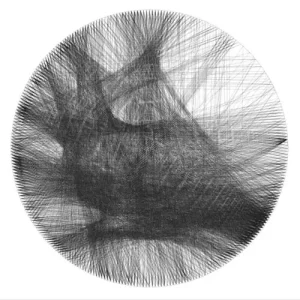
String Art Generator
String Art Generator by Yiran is a grasshopper plugin which generates a string art sequence based on an input image. You can

Techniques and Technologies in Morphogenetic Design

The cover title of this issue, Techniques and Technologies in Morphogenetic Design, provides it with a very wide frame: morphogenesis pertains not only to the development of form and structure in an organism, but also to an organism’s evolutionary development over time.

It is, in effect, a substantial signpost that in a broad brushstroke takes in the whole gamut of natural systems, both current and in evolution. It is indicative of the not inconsiderable, some might say infinite, project that guest-editors Michael Hensel, Achim Menges and Michael Weinstock have taken on through their activities in the Emergence and Design Group and their teaching and research at the Architectural Association (aa) in London.

By studying the complex and dynamic exchange between organisms and their environment, they have sought out a new model for architecture – one that through the application of biochemical processes and the functionality of life is in empathy rather than at odds with natural ecology.

By keeping their eye on this higher goal, the group is providing a prescient new ecological paradigm for architecture that seeks, through new scientific advances in the visualisation and understanding of natural processes and systems, to leave behind the known structural and material building blocks of architecture.

Techniques and Technologies in Morphogenetic Design expands and develops the themes of the previous, highly successful Emergence: Morphogenetic Design Strategies issue of 4 (Vol 74, No 3, 2004), which was also guest-edited by Michael Hensel, Achim Menges and Michael Weinstock of the Emergence and Design Group.

While the first volume elucidated the concepts of emergence and self-organisation in relation to the discipline of architecture, this issue augments its theoretical and methodological foundation within a biological paradigm for architectural design, while also discussing promising, related, instrumental techniques for design, manufacturing and construction. Michael Hensel introduces the issue and explains how it addresses a much broader range of scales, from the molecular to that of macrostructure and, beyond, to ecological relations.

Complex adaptive systems entail processes of selforganisation and emergence. However, both concepts express very different characteristics of a system’s behaviour. Selforganisation can be described as a dynamic and adaptive process through which systems achieve and maintain structure without external control.

The latter does not preclude extrinsic forces, since all physcial systems exist within the context of physics, for as long as these do not assert control over intrinsic processes from outside. Common form-finding methods, for example, deploy the selforganisation of material systems exposed to physics to achieve optimisation of performance capacity.

Selforganisational systems often display emergent properties or behaviours that arise out of the coherent interaction between lower-level entities, and the aim is to utilise and instrumentalise behaviour as a response to stimuli towards performance-oriented designs.

Self-organising systems display capacity for adaptation in the presence of change, an ability to respond to stimuli from the dynamic environment. Irritability facilitates systems with the capacity to adapt to changing circumstances.
Adapting geometry to changing circumstances throughout the design process can be a time-consuming and costly ordeal or, on the other hand, can be anticipated and tools designed that facilitate the possibility of significant changes right up to the manufacturing stage.

Whenever the design requirements and constraints and performance profiles of a design change, it is important that the design can absorb such changes through a modifiable geometric modelling setup capable of retaining geometric relations while being substantially modified.

The self-organisation processes underlying the growth of living organisms can provide important lessons for architects. Natural systems display higher-level integration and functionality evolving from a dynamic feedback relation with a specific host environment.
Biologists, biomimetic engineers and computer scientists have begun to tackle research in this field and there is much to learn from their work. Here, Michael Hensel examines the work undertaken by Professor Przemyslaw Prusinkiewicz and his collaborators at the Department of Computer Science at the University of Calgary in Alberta, Canada,1 outlining its potential application for architectural design.

Biology is the science of life. It concerns itself with the living. The long-proclaimed biological paradigm for architectural design must for this reason go beyond using shallow biological metaphors or a superficial biomorphic formal repertoire.
The consequence is a literal understanding of the design product as a synthetic life-form embedded within dynamic and generative ecological relations. Michael Hensel examines the repercussions of this proposition and surveys current developments in biology and biochemistry with respect to synthetic-life research, gathering insights into their potential application in architectural design.

String Art Generator by Yiran is a grasshopper plugin which generates a string art sequence based on an input image. You can

This paper by Alessandro Liuti, Sofia Colabella, and Alberto Pugnale, presents the construction of Airshell, a small timber gridshell prototype erected by employing a pneumatic formwork.

In this paper by Gregory Charles Quinn, Chris J K Williams, and Christoph Gengnagel, a detailed comparison is carried out between established as well as novel erection methods for strained grid shells by means of FE simulations and a 3D-scanned scaled physical model in order to evaluate key performance criteria such as bending stresses during erection and the distance between shell nodes and their spatial target geometry.

In this paper by Frederic Tayeb, Olivier Baverel, Jean-François Caron, Lionel du Peloux, ductility aspects of a light-weight composite gridshell are developed.
Parametric Ideas for Architects @2025